Mushrooms are a healthy, delicious addition to any diet and have a host of medicinal benefits. Their use as a source of nutrients and in traditional medicine dates back millions of years.
There are around 3000 edible mushrooms in the fungi family. They’re unique in that they’re neither animals nor plants, and for most people, they’re the only type of fungus we eat.
Many people who use and enjoy mushrooms for their taste or health benefits only know the fleshy part of the fungus.
But there’s so much more to a mushroom than this.
Perhaps you’re wondering, “What are the parts of a mushroom called?” or “What parts can you eat of a mushroom?”
In this guide, we explore the parts of a mushroom and their function, and you’ll find answers to these questions and many more.
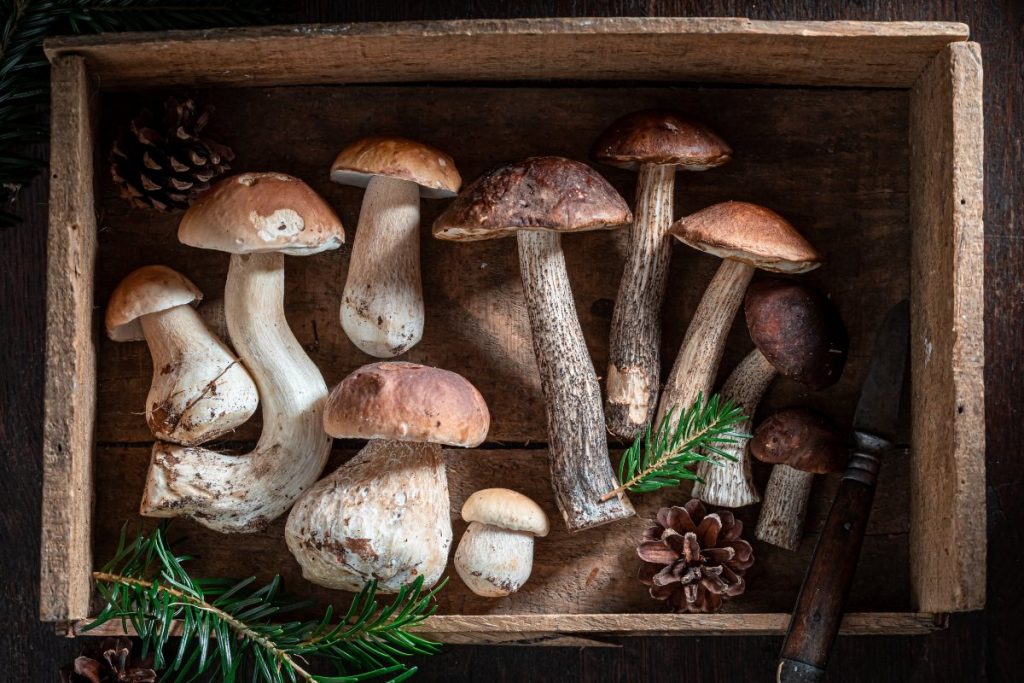
Why Learn The Parts of a Mushroom?
Maybe you’re only interested in store-bought mushrooms as a tasty addition to a meal or enjoy taking photos of wild mushrooms.
If so, learning more about the parts of a mushroom may not interest you.
But, if you find the idea of foraging for edible mushrooms or growing mushrooms at home appealing, learning about the parts of a mushroom is important.
Knowing the parts of a mushroom helps you differentiate edible mushrooms from poisonous ones while foraging in the wild.
And a knowledge of the parts and their function will help you understand the mushroom life cycle and how they reproduce.
You’ll need this knowledge to cultivate your own mushrooms successfully.
Now that you know why, let’s look at the various parts of a mushroom and what role they play in the mushroom life cycle.
What Are The Parts of a Mushroom?
There are two main parts to a mushroom fungus; An above-ground fruiting body or sporophore and the underground mycelium.
Mycelium
Mycelium forms the underground part of the fungus that we seldom see.
It’s a vast, complex network of cells that form thin fibers, like plant roots, and spread under the forest floor in search of nutrients.
When a mushroom spore lands in a spot with ideal growing conditions, it germinates. Producing thread-like filaments called hyphae that grow, interconnect and form mycelium.
Extensive networks of mycelium spread over large distances underground and connect fungi to each other.
Mushrooms don’t have chlorophyll like plants for food production. Instead, the mycelium grows by absorbing nutrients from dead and decaying organic matter.
Mycelium lives for many years and may remain dormant for several seasons until conditions are perfect for fruiting.
Mycelium’s only goal is to reproduce and keep its species going. To do this, it grows mushrooms that produce and distribute spores.
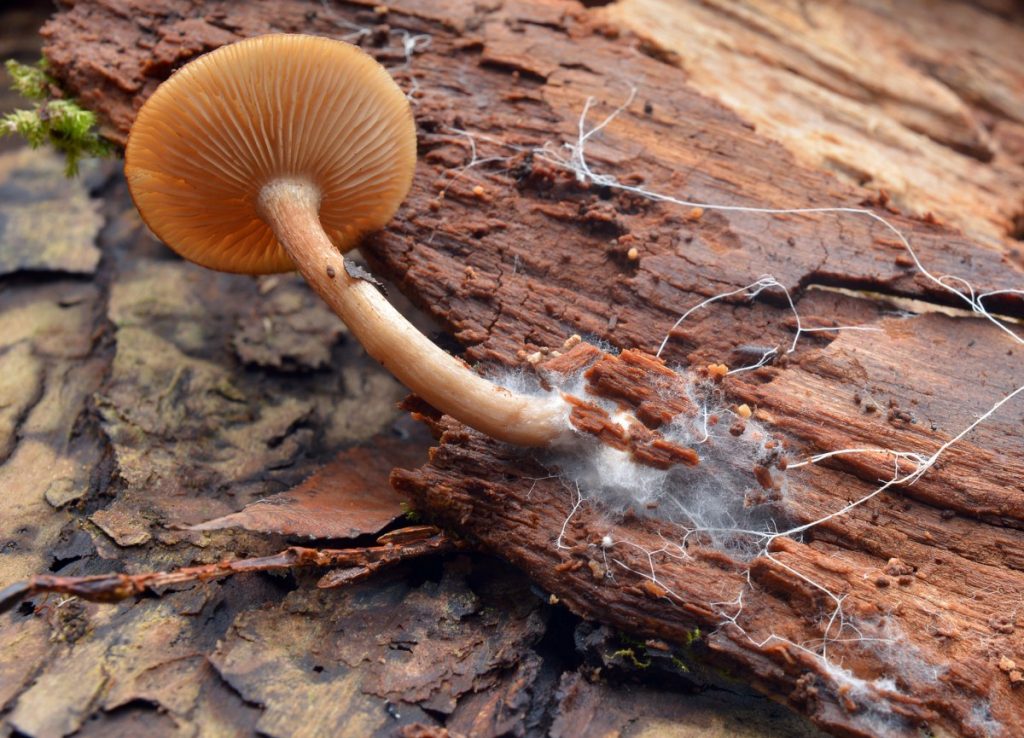
Fruiting Body
The umbrella-shaped body of a mushroom that we recognize is the fruit of a much larger underground fungus.
They’re called fruiting bodies or sporophores and are the fleshy, sometimes edible, part of the fungus.
The fruiting body usually grows above the ground or on the surface of a host. Its purpose is to produce and distribute spores so the fungus can reproduce.
What Is The Main Part of a Mushroom?
Although you cannot see it, the underground mycelium is the main part of a mushroom and it’s vital for the growth of the fungus.
The mycelium makes up the majority of the fungus. The mushrooms are simply the fruit it produces when it wants to reproduce.
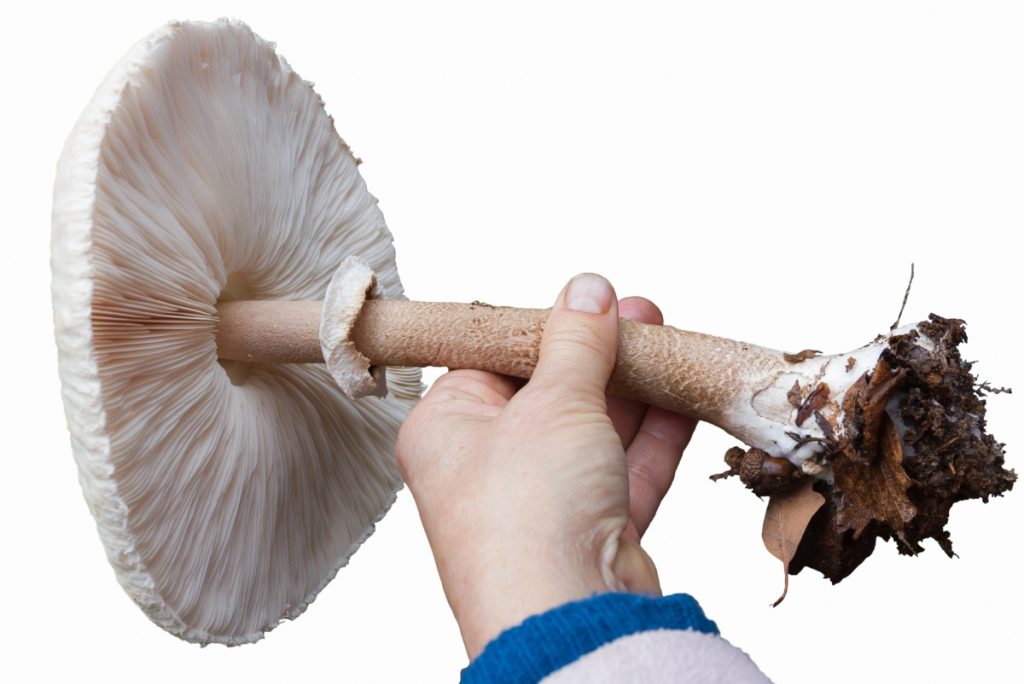
What Is The Structure of a Mushroom?
The structure of a mushroom’s fruiting body varies from species to species.
The edible Basidiomycota and Ascomycota types of fungi have one of the more complex mushroom structures.
These mushrooms have a cap, gills and a stem and may also have a ring. But, not all mushrooms have all these parts.
Parts of a Mushroom And Their Functions
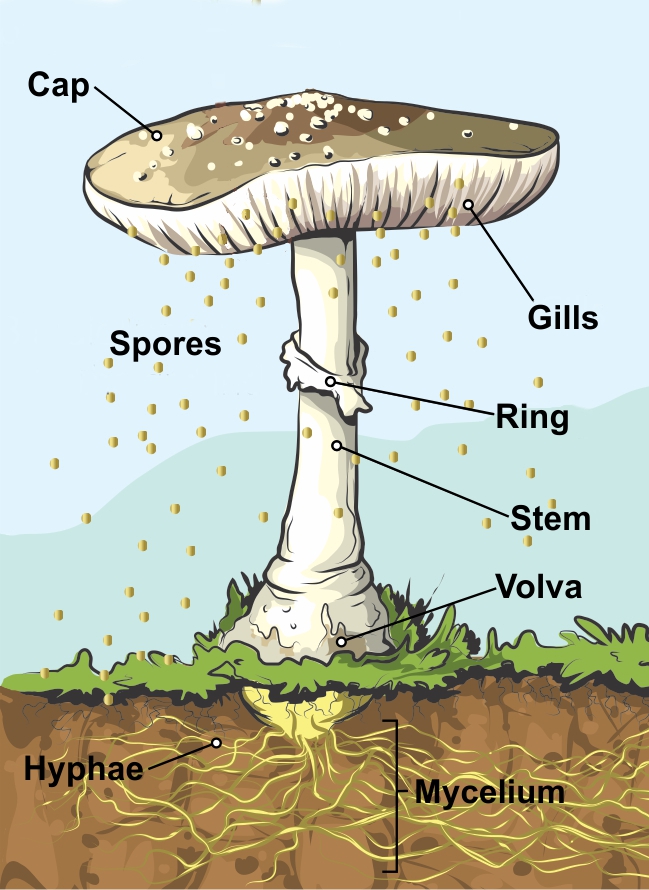
From the information above, you may have discovered that there’s much more to a mushroom than you thought.
In the section below, we look at the parts of a mushroom in more detail and explore their role in the life cycle of a mushroom.
You will notice that most of the parts are part of the fruiting body or sporophore. Which is the part of the fungus we commonly refer to as a mushroom.
Cap
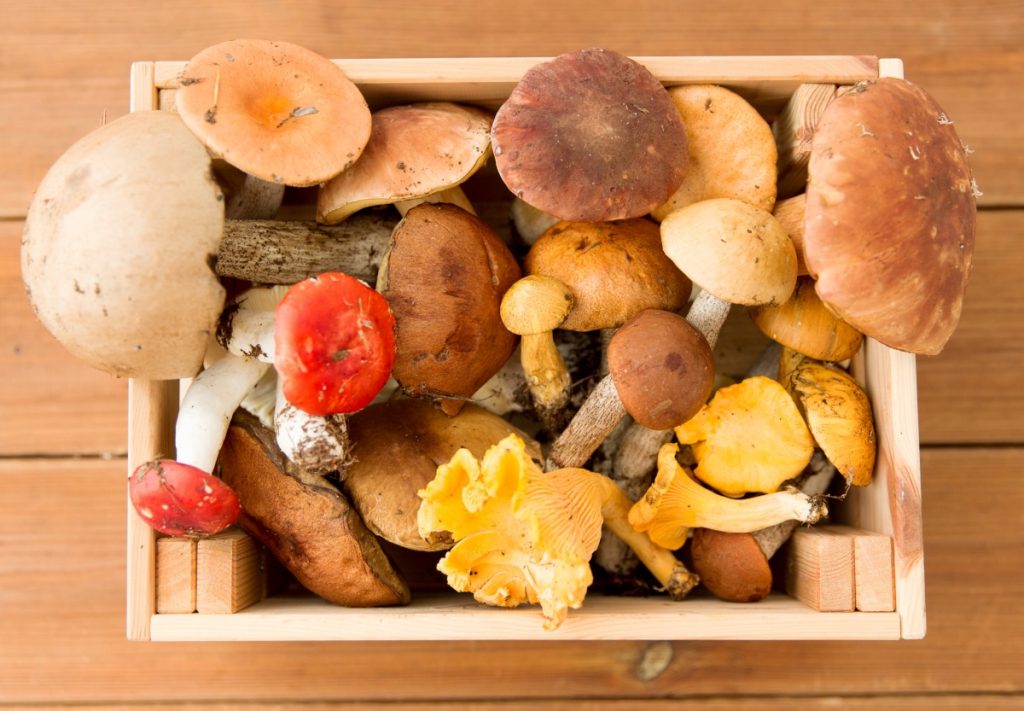
The cap of the mushroom is the topmost part and gives the fungi its umbrella-like shape. It can be flat, conical or spherical and have a wide range of textures and colors.
The caps’ color and texture don’t only vary by species. They also change depending on the stage of development of the mushroom.
The shape of the cap also changes throughout the development of the mushroom.
The cap contains the spore-producing surface of the mushroom, made up of gills, pores or teeth.
The function of the cap is to protect the spore-producing surface. It does this in the same way that an umbrella would protect you from rain or the heat of the sun.
What Is The Cap of a Mushroom Called?
The technical name for a mushroom cap is a pileus. We refer to mushrooms that have a cap-like structure as being ‘pileate.’
Gills
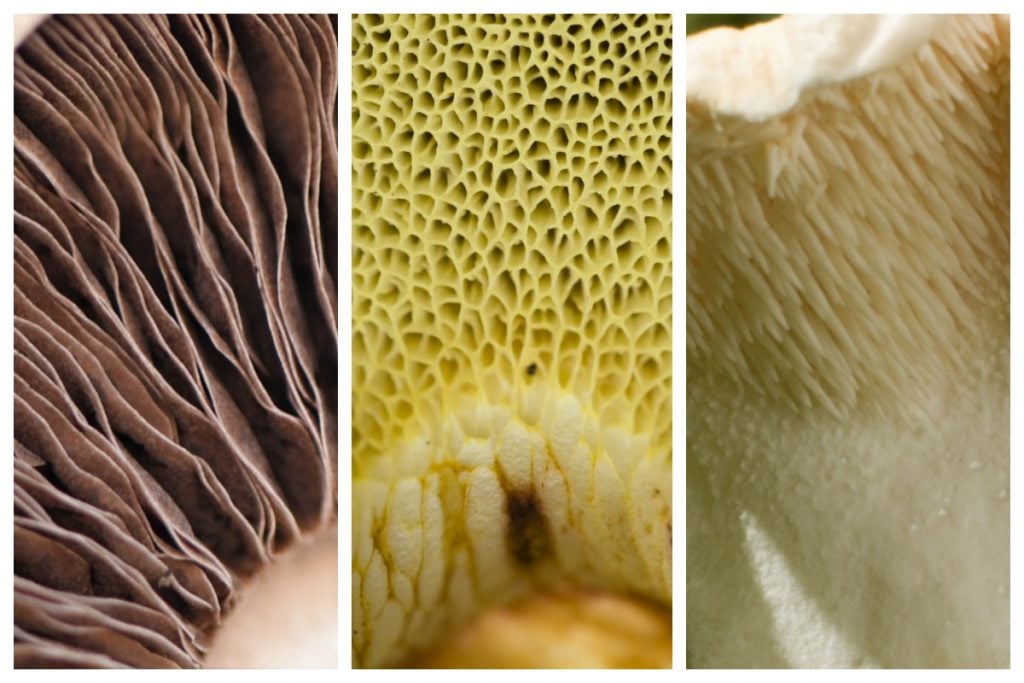
The gills are thin, paper-like structures layered side by side that often hang from the underside of the cap.
Gills come in various colors and have distinct features, making them useful for species identification.
The shape of the individual gills, their color and how far apart they are from each other all play a role.
How and where they attach to the stem is also important for mushroom identification.
Not all mushrooms have gills. Some, like porcinis, have pores. These are tiny, tightly packed tubes that resemble a sponge.
Others, like lion’s mane, have teeth or needles instead of gills.
The function of the gills, called lamellae, is to produce and disperse billions of spores.
Spores

Mushroom spores are microscopic, unicellular reproductive cells produced in the gills.
Most spores are shades of white, brown, pink or black, but there are also some mushrooms with orange, green and yellow spores.
Some scientists use the color, size and shape of spores to identify fungi.
A mushroom spore is like a seed in that it contains all the genetic material required to grow new mushrooms.
At the end of the mushroom growth cycle, mushrooms release their spores. Wind, water, animals or humans then disperse them.
The spores need to land in a warm, moist, shaded area to germinate.
Ring
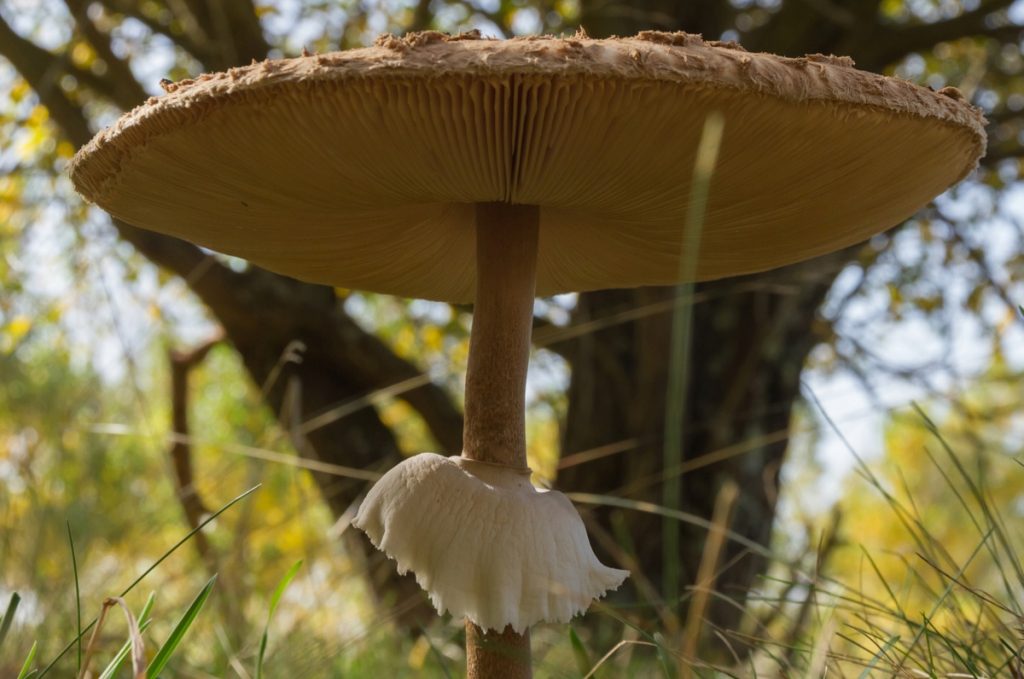
A ring of tissue is sometimes found on a mushroom stem. It’s the remaining part of a partial veil.
A partial veil is a thin piece of tissue that provides an extra layer of protection for the gills when the mushroom is young.
As the mushroom matures and the cap grows, it ruptures the partial veil exposing the gills. Sometimes the remnants of the veil form a ring of tissue around the stem.
Rings vary considerably and may be thick and prominent or thin and cobweb-like.
People use the ring type, position and shape for the identification and classification of mushrooms.
Stem

The stem or stipe supports the cap and elevates it above the ground.
The function of a stem is to assist with the dispersal of the spores. In the wild, many mushrooms use the wind or animals to scatter their spores.
Thus, the cap and gills need to be high enough from the ground for the mushroom to effectively release its spores into the wind or onto passing animals.
The size, shape and texture of the stem play a role in identifying mushrooms.
Some mushrooms have no stems at all. While others, like oyster mushrooms, have gills that extend down the sides of the stem.
We refer to mushrooms that have a stem or stipe as ‘stipitate.’
Volva
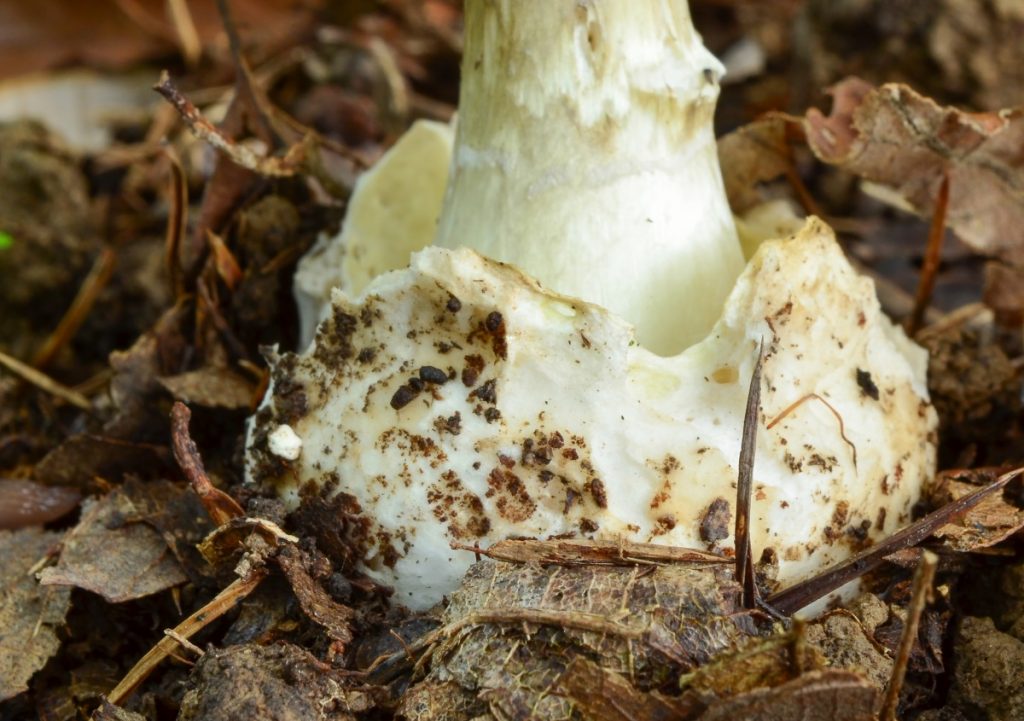
The volva or universal veil is a layer of tissue that protects the immature mushrooms of some species as they grow out of the ground.
As the mushroom matures, it breaks through the universal veil, leaving the bottom part of the veil at the base of the stalk.
The remnants create a cup-like shape at the stem’s base. The volva is very important when identifying mushrooms in the wild.
A volva is a significant feature of mushrooms in the Amanitaceae family, many of which are very poisonous.
Mycelium
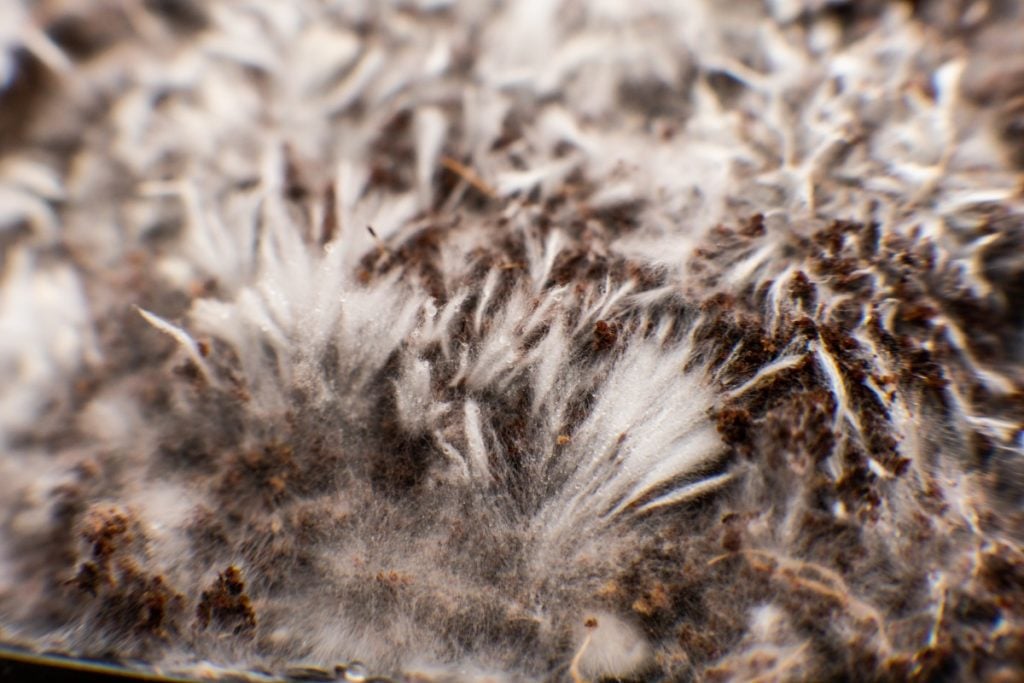
Mycelium is a web-like structure made up of long hyphae fibers that are often white or cream.
The mycelium, as a whole, is the non-reproductive, vegetative part of the mushroom found in soil or other organic matter.
The function of the mycelium is to extend the area in which fungi can find nutrients as they are stationary organisms.
The mycelium grows outwards to look for water and other nutrients. It then transports these to the fruiting body or mushroom so it can mature and release spores.
Mycelium plays a vital role in nature as it aids the decomposition of plant material and provides food for many soil invertebrates.
Hyphae
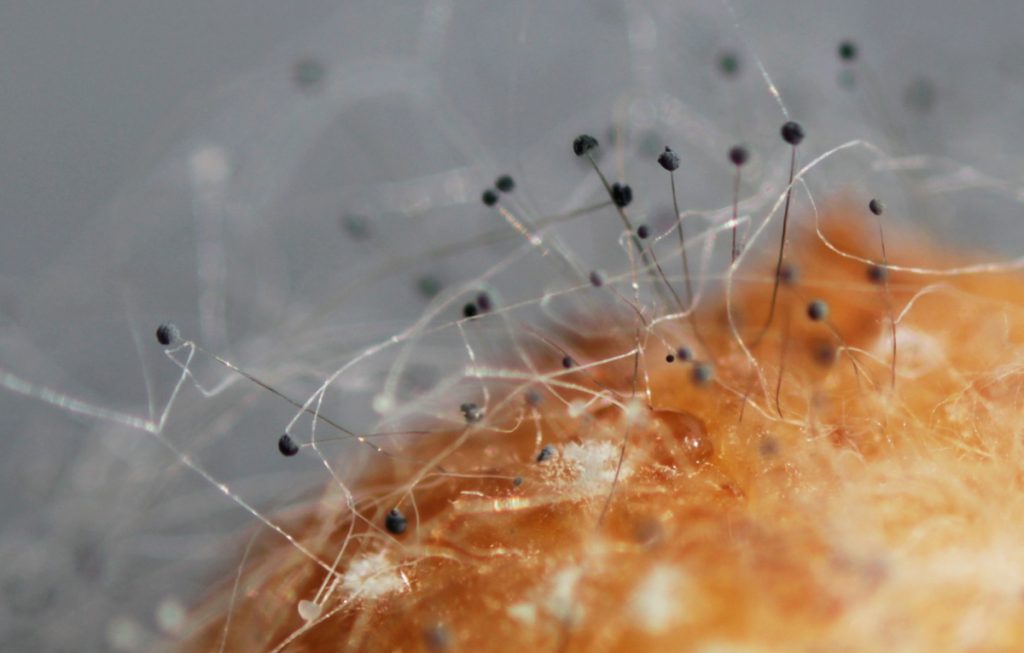
The hyphae are the microscopic,thread-like filaments or tubes that interconnect and grow to form the web-like mycelium or body of a fungus.
The function of the hyphae is to absorb nutrients from the environment and transport them to other parts of the fungus.
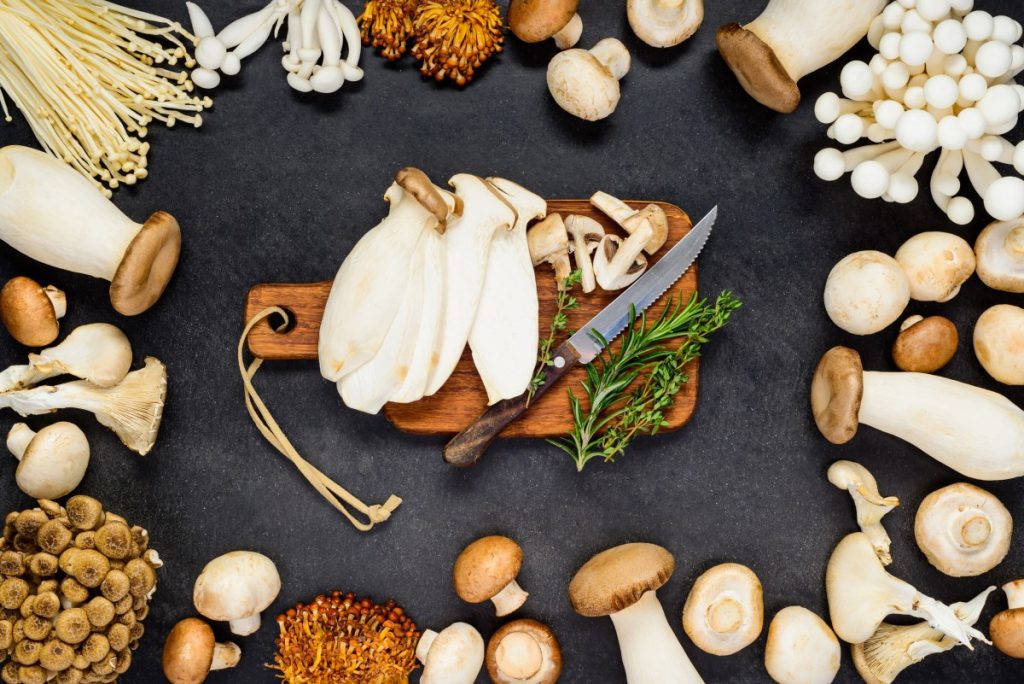
What Parts of a Mushroom are Edible?
All the parts of the fruiting body are edible, including the cap, gills, ring and stem. But, depending on the species of mushroom, some may be tougher than others.
This is assuming the mushroom you have is an edible species of mushroom.
With so many similar species of mushrooms, it can often be difficult to tell them apart. Especially when foraging for mushrooms in the wild.
If you are not sure, rather don’t eat the mushroom as some species can be fatal.

Which Parts of a Mushroom Are Normally Eaten?
The stems, gills and caps of mushrooms are normally the parts eaten.
Some people prefer mushroom caps, while others cultivate species specifically for their stems.
Here are some common examples of parts of mushrooms we eat.
- The king oyster mushroom has a thick stem with a small cap. Both the stem and cap are edible and delicious, but its stem is a favorite. It has a firm texture, and people often use it as an alternative to meat.
- Button mushrooms, also known as cremini, portobello, white or brown mushrooms, also have edible stems. But the caps are usually more tender and flavorful.
- Enoki mushrooms are popular in East Asian cuisine and have a long stem and small cap. You eat both the stem and cap of enokis, and these small mushrooms are delicious in soups and broths.
- Morel mushrooms are delicious, and you can eat both the cap and the stem. But cook them before eating as raw morels have toxins that break down once cooked.
- The stems and caps of chanterelle mushrooms have been used in French cuisine for hundreds of years. They’re highly sought after by chefs and taste a bit like black pepper with an earthy, woodsy flavor.
- Most oyster mushrooms, except for the king oyster, have gills that run most of the way down the stem. They often only have very short stems. The tasty part you eat is thus mostly the cap and gills.
- You can cook porcini mushrooms whole or twist the caps to separate them from the stems. The caps are more tender, but the stems are usually thinly sliced or blended and used as a filling or in a mushroom soup.
- Shiitake mushrooms have a rich meat-like flavor. Chefs use the caps in stir-fries and risottos, but the stems are very chewy and tough. However, they’re great for making soup bases.
- You can cook both the stems and caps of chestnut mushrooms, and the result is a tasty dish with two different textures. The caps remain firm with a silky texture, and the stems are crunchy, similar to lightly cooked celery or asparagus.
Some delicious, edible mushrooms look very different and don’t have familiar umbrella features. Examples of these are the puffball, maitake, lion’s mane and hedgehog mushrooms.
Many people consider mushrooms superfoods as they have such a broad range of nutritional and medicinal benefits.
Are you looking for ways to add more delicious mushrooms to your diet? We’ve put together 30 of our favorite tried and tested recipes to give you some ideas.

Final Thoughts
The mushrooms that we know are the fleshy fruit bodies of a much larger underground fungus.
The underground part of the fungus is a complex network of mycelium that plays a crucial role in nature. It aids in the decomposition of plant material and is a vital part of a forest ecosystem.
Now that you know what to call the parts of a mushroom and what parts you can eat, we hope you feel inspired to try and grow your own mushrooms.
Our Mushroom Growing Hub has more information and resources to get you started.
